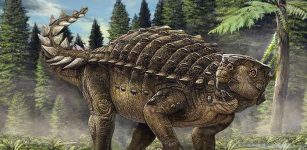Our DNA Less ‘Human’ Than Scientists Previously Thought
MessageToEagle.com – A new discovery suggests that human DNA is less human than scientists previously thought.
Nineteen new pieces of non-human DNA — left by viruses that first infected our ancestors hundreds of thousands of years ago — have just been found, lurking between our own genes.
Scientists say that one stretch of newfound DNA, found in about 50 of the 2,500 people studied, contains an intact, full genetic recipe for an entire virus.

Whether or not it can replicate, or reproduce, it isn’t yet known. But other studies of ancient virus DNA have shown it can affect the humans who carry it.
“This research provides important information necessary for understanding how retroviruses and humans have evolved together in relatively recent times,” says senior author and virologist John Coffin, Ph.D. of the Tufts University School of Medicine.
In addition to finding these new stretches, the scientists also confirmed 17 other pieces of virus DNA found in human genomes by other scientists in recent years.
Over generations, the virus-generated DNA kept getting copied and handed down when humans reproduced. That’s how it ended up in our DNA today.
The study shows that approximately 8 percent of what we think of as our “human” DNA actually came from viruses.
The study looked at the entire span of DNA, or genome, from people from around the world, including a large number from Africa — where the ancestors of modern humans originated before migrating around the world.
The team used sophisticated techniques to compare key areas of each person’s genome to the “reference” human genome.
The findings are published in the Proceedings of the National Academy of Sciences.
MessageToEagle.com
Expand for references









